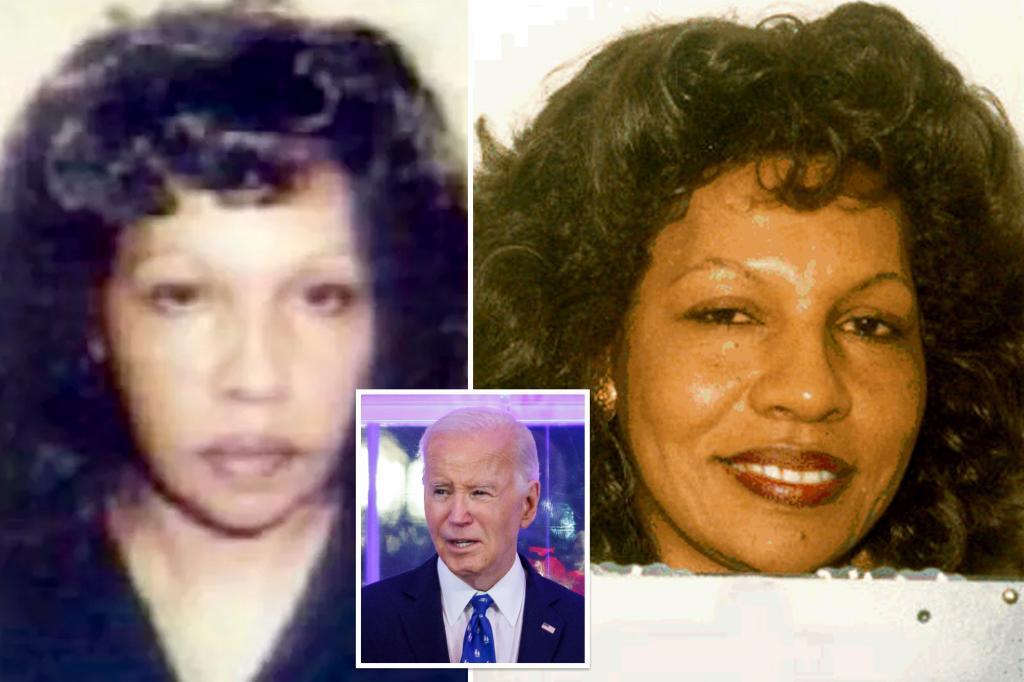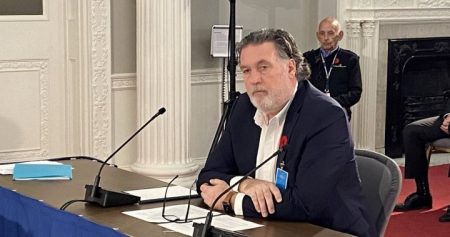Josephine Gray, a Maryland woman infamously known as the “Black Widow,” was granted clemency by President Biden as part of a sweeping commutation initiative targeting non-violent offenders. Gray’s release, however, has sparked controversy and outrage, particularly from the prosecutor who handled her case. Her story is one shrouded in suspicion, allegations of voodoo practices, and the deaths of three men intimately connected to her. While never convicted of murder, the circumstances surrounding the deaths of two ex-husbands and a long-term lover cast a long shadow over her past. Biden’s decision to grant her clemency has reopened old wounds and fueled debate about justice, rehabilitation, and the limits of presidential pardon power.
Gray’s criminal history centers around insurance fraud related to the deaths of these men between 1974 and 1996. Although initially charged with murder, she ultimately avoided a murder trial, accepting a plea deal that resulted in a 40-year sentence for insurance fraud. Her attorney at the time argued that a murder trial was unnecessary, as her age, 55 at the time of conviction, meant she would likely die in prison. This prediction, however, proved incorrect, and her release after serving just over two decades has left many questioning the rationale behind President Biden’s decision. The prosecution argued that Gray, far from being a non-violent offender, orchestrated the deaths of her partners, motivated by financial gain and fueled by a fascination with voodoo. They painted a picture of a manipulative woman who used her charm and possibly occult practices to influence those around her to commit murder on her behalf.
The circumstances surrounding each death were eerily similar: all three men, Norman Stribbling (her first husband), William Gray (her second husband), and Clarence Goode (a lover of six years), were found shot dead inside their cars. While the evidence linking Gray directly to the killings was circumstantial, the pattern of death surrounding her raised significant red flags. Prosecutors alleged that she convinced Clarence Goode to murder her second husband, William Gray, before Goode himself met a similar fate. The discovery of voodoo materials in Gray’s possession, including dolls pierced with needles, further fueled speculation about her involvement in the deaths and added a layer of mystique to the already complex narrative.
The reactions to Gray’s release have been stark. James Trusty, the prosecutor who originally handled her case, expressed his outrage, stating that the decision felt like a disregard for the rule of law. He maintains that Gray was a dangerous individual who manipulated the system to avoid a murder trial and ultimately escaped justice. The families of the deceased men likely share similar sentiments, left without definitive answers and closure regarding the deaths of their loved ones. While the White House has yet to provide a specific justification for Gray’s inclusion in the clemency list, President Biden’s overall message emphasized the themes of second chances and rehabilitation. His statement highlights the belief that individuals who demonstrate remorse and a commitment to change deserve an opportunity to reintegrate into society and contribute positively to their communities.
However, the case of Josephine Gray raises critical questions about the application of clemency, particularly in cases where serious crimes, even if unproven, loom large. While the clemency power is an important tool for addressing injustices within the legal system, its use in cases like Gray’s can be deeply unsettling for those who believe justice has been circumvented. The lack of transparency surrounding the selection process further fuels these concerns, making it difficult to understand the precise criteria used to determine who receives clemency and who remains incarcerated. The “Black Widow” case will undoubtedly continue to be debated, serving as a focal point in the ongoing discussion about the appropriate use of presidential clemency powers and the delicate balance between rehabilitation and accountability.
The crux of the matter revolves around the interpretation of “non-violent offender.” While Gray was technically convicted of a financial crime, the underlying circumstances suggest a far more sinister narrative. The prosecution’s theory posited that Gray was the mastermind behind a series of murders, manipulating others to carry out her deadly schemes. Even if she didn’t pull the trigger herself, her alleged orchestration of the killings blurs the line between non-violent and violent offenses. This ambiguity makes Gray’s inclusion in a clemency initiative focused on non-violent offenders appear contradictory and raises doubts about the thoroughness of the review process. Ultimately, Gray’s release leaves a lingering sense of unease, highlighting the complexities and potential pitfalls of applying blanket clemency policies without a comprehensive understanding of the individual cases and their broader implications.










